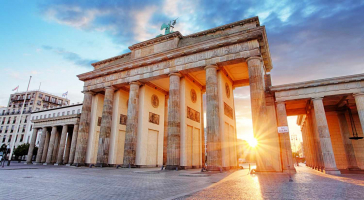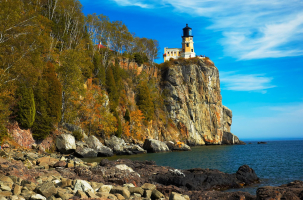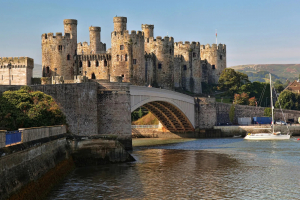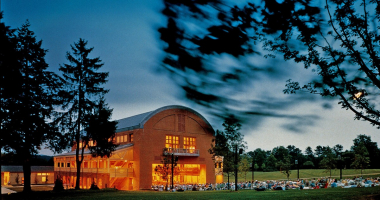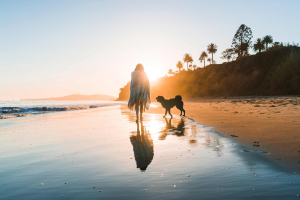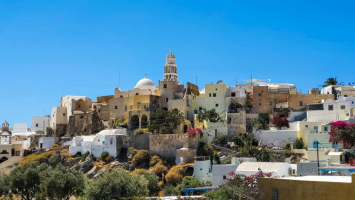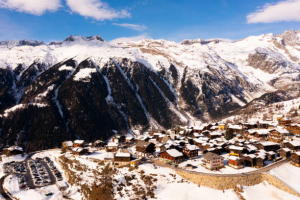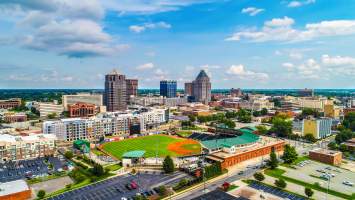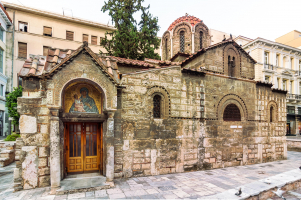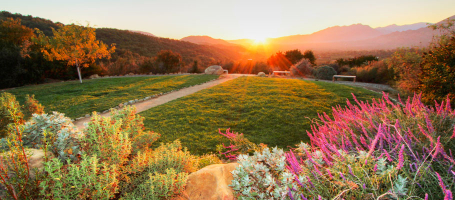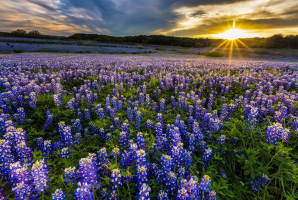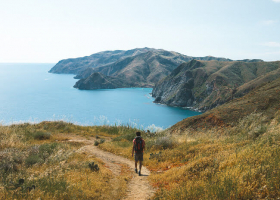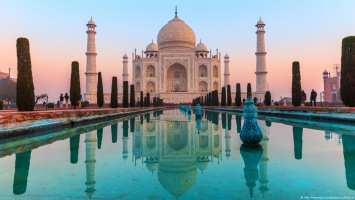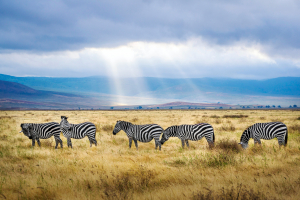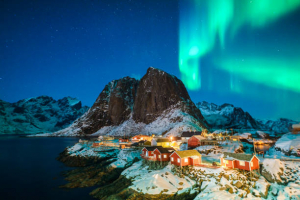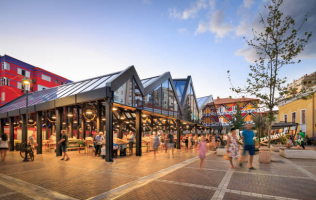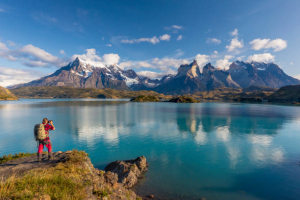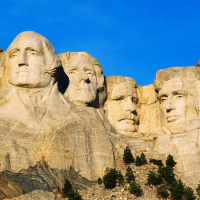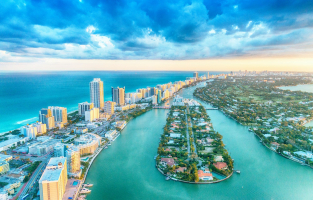Top 10 Best Things To Do in Dominican Republic
The Dominican Republic is the Caribbean's most popular tourist destination. Millions of visitors from all over the world visit our tropical island nation, and ... read more...for good reason. There are several activities to do in the Dominican Republic. The Dominican Republic is known as a "micro-continent" because it has everything, from vivid blue Dominican beaches to frigid highland villages surrounded by pine forests. Now, let's discover the best things to do in Dominican Republic.
-
Ciudad Colonial, Spanish for "Colonial City", also known as Zona Colonial, is the oldest portion of Santo Domingo, the Dominican Republic's capital. While Santo Domingo has a thriving metro population of over two million people, making it the Caribbean's largest city, the nearly 500-year-old town is also noted for its rich history and tradition. This is almost exclusively centered on the so-called Ciudad Colonial (or Zona Colonial), which extends all the way up to the western banks of the Ozama River as it runs to the sea.
This combination of cobblestone walkways and magnificent homes is the New World's oldest colonial city core. Columbus walked here in the 15th century, and a huge bronze monument in the central Parque Colon bears witness to his long-lasting influence. The First Cathedral of America (the first of its type in the Americas), the majestic Alcazar De Colon, and the crenulated tops of the Ozama Fort are all must-sees in the UNESCO region.
Columbus Park is one of the Colonial City's most notable landscaped spaces. It used to be the location where the people of Santo Domingo enjoyed their festivities. Today, it is still utilized as a venue for many festivals and other cultural events, which you may enjoy owing to the city's comprehensive schedule of activities. The structures that surround this area exemplify the finest colonial design. In the center, there is a monument of Christopher Columbus, who gives the park its name, ruling over the space with his finger pointing towards the sky, which grabs our attention because images of Columbus with his finger pointing forward are more popular.
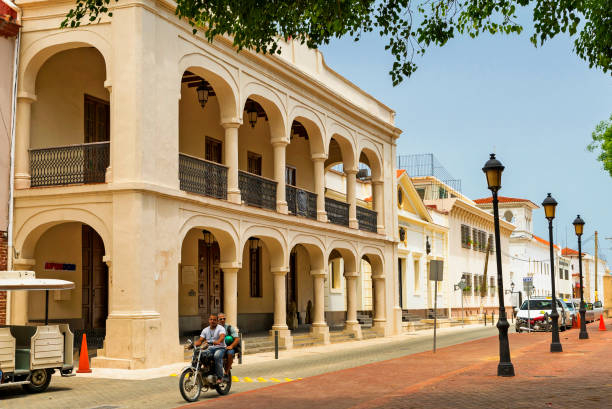
istockphoto 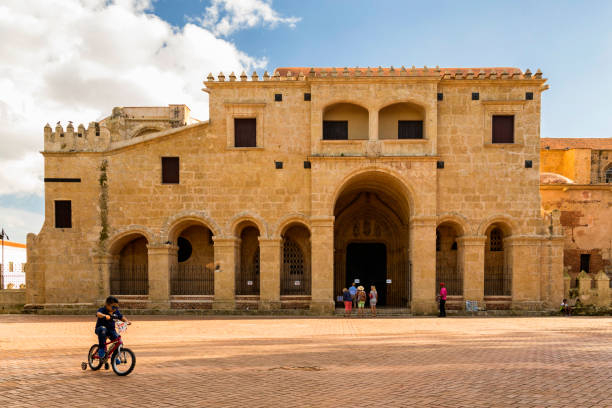
istockphoto -
The Damajagua waterfalls, nestled amid the rugged landscape of the Dominican Republic's Northern Corridor Mountain range, provide exquisite pools created by limestone and pressure from torrents of water. A guide is now necessary, but there is no minimum group size, so you can go alone if you choose. It will take you around four hours to get to the 27th waterfall and return. The falls are open from 8:30 a.m. to 4 p.m., but if you go early, before the masses come, you may have the entire site to yourself.
You can ascend to the seventh, twelfth, or twenty-seventh waterfalls. The majority of 'jeep safari' package itineraries only visit the seventh waterfall. You must be in decent physical condition and over the age of 12. The admission charge varies according to nationality and distance traveled; foreigners pay RD$460 to access the tallest waterfall and less to reach the smaller ones.
Every admission charge of US$1 is donated to a community development fund. Eight members, including the Secretary of Environment, sit on the board to ensure that the money is utilized appropriately. With an average of 3000 tourists passing through the falls each month, the bank account is doing well - plans are in the works to create a library for the local school, repair a local church, and construct footbridges over a nearby river. Other Peace Corps volunteers are carrying on Kennedy's effort.
To get to the falls, take the roadway south from Imbert for 3.3 kilometers (crossing two bridges) until you reach a sign with waterfall photographs on your left. It's roughly 1km down to the visitor's center from there. Take a gua-gua from Puerto Plata and ask to be dropped off near the entrance. The large Texaco station in Imbert acts as a junction for the entire region. There is gua-gua service to Santiago and Puerto Plata on a regular basis.
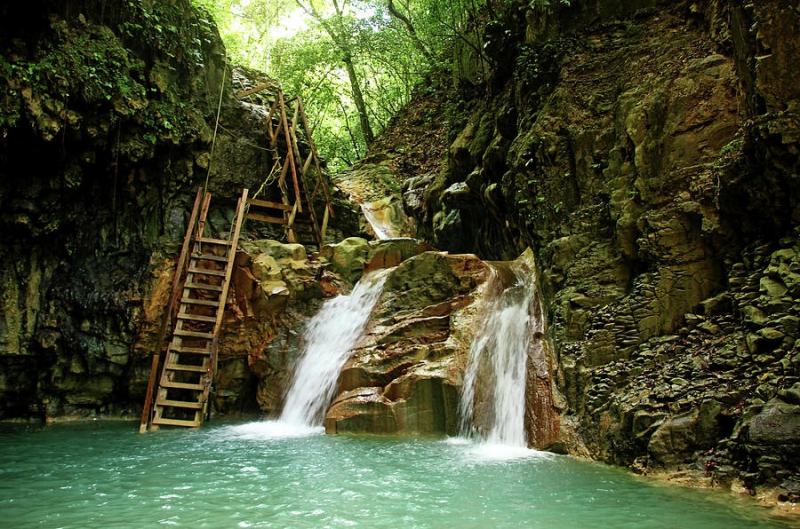
ralym.com 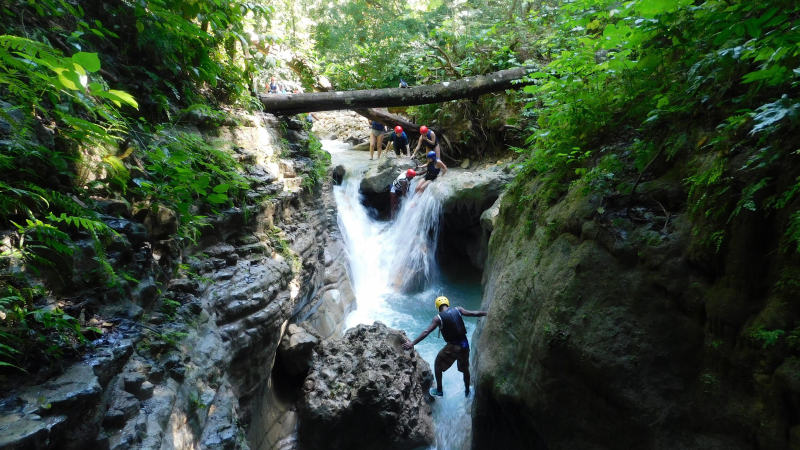
ralym.com -
Samaná is the ideal location to observe North Atlantic Humpback Whales, who spend the winter in the warm marine sanctuary of Samaná Bay before beginning their lengthy journey to their summer pastures, which can be found as far away as Greenland and Iceland! Although not all humpback whales travel in groups, there are at least 300 whales in Samaná Bay at any given moment during the whale-watching season. With so many whales around, you'll have plenty of opportunities to see various behaviors - it's a matter of patience more than luck.
The greatest time to visit Samaná Bay is between the months of December and March, when hundreds of humpback whales arrive to mate and give birth in the warm waters. Spend the day contemplating the lives of these giant aquatic beasts on a trip led by a marine scientist from the adjacent city of Samaná. Sleepy, laid-back settlements surround Samaná, lending itself more to comfortable European café culture than the splashy, towering resorts of Punta Cana. Stay a bit after your day on the water.
Samaná Bay's whale nursery is well protected. Only whale-watching boats are permitted to access the bay, and even these are subject to tight restrictions. Every spring, the interior of the bay effectively transforms into a mothers' ward for calves and nursing. Male whales congregate on the bay's outskirts.
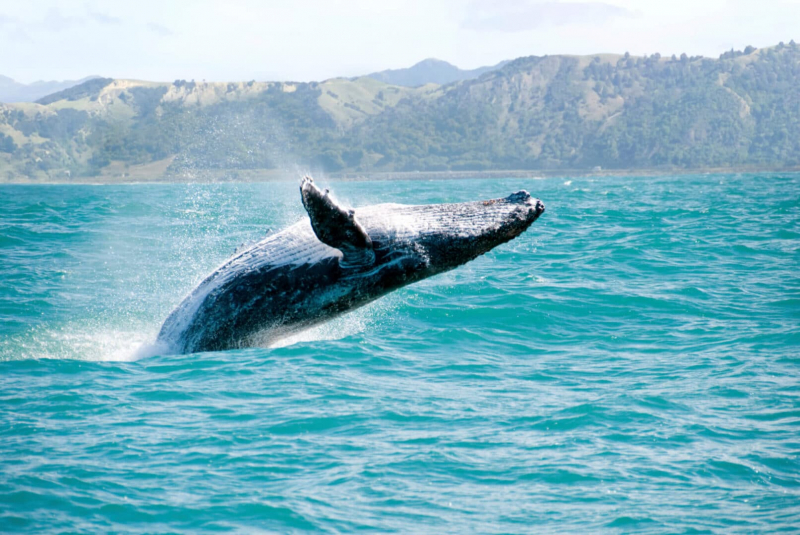
beachtownproperty.com 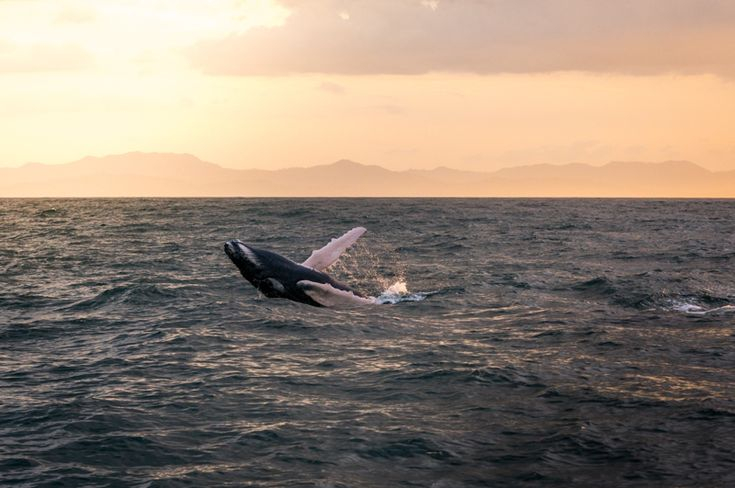
Pinterest -
People have traveled from all over the world to ride the waves in Cabarete since the sport began. Why? The wind blows here all year, and the winter months produce some big rolling waves. Cabarete is the ideal destination for touring kitesurfers to relax, drink a beer, and make some fantastic new friends. Fellow kitesurfers, like the wind, are here all year, so anticipate a terrific social scene, superb nightlife, and lots of events where you can meet some folks to go enjoy the waves with.
Cabarete also has some incredible local pro kitesurfers. If you're lucky, you might get to meet them and learn something from them. Cabarete has some amazing kitesurfing places in store - it's a terrific place to find incredible kitesurfing chances and experiences.
Kite Beach is exactly what it sounds like: a kitesurfing beach! Kite Beach is by far the most popular site for kitesurfing in Cabarete, but don't be scared off by its popularity. With a terrific combination of flatwater and big waves around the reef, there's plenty of motivation to get the kite out here.
La Boca is located around 7 kilometers south of Cabarete. With an incredible river mouth flowing out into the ocean as you reach the wind, this little flatwater lagoon is kitesurfing bliss. Beginners should avoid this one since it might be challenging due to the surrounding trees being so near to the coast. Intermediate and intermediate kitesurfers will like this one, making La Boca a popular training location for local pros.
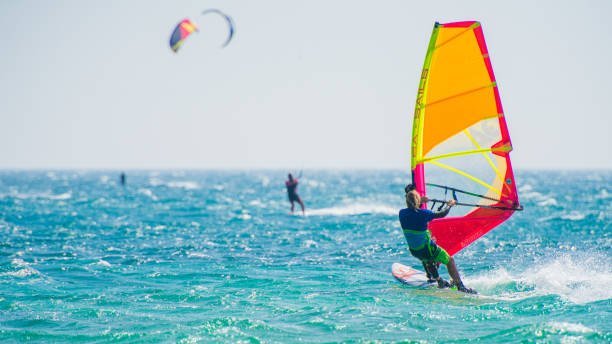
istockphoto 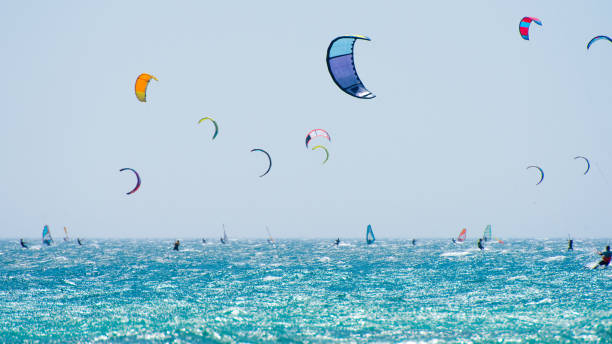
istockphoto -
Because it's a 2625ft (800m) climb to the summit of Pico Isabel de Torres, you'll be glad to have a teleférico (cable car) to assist you. The flat-topped peak provides unimpeded views over the Dominican Republic's northern area. Just make sure you get there early because clouds tend to build around the peak as the day progresses. Take a cable car to Pico Isabel de Torres, the highest point in the city. Enjoy the magnificent panoramas and the seven-minute journey up the 793 m (2,600 foot) mountain.
Explore the flat mountain top, which is ornamented with a gigantic replica of Christ the Redeemer monument, and take in the panoramic view of the city, the ocean, and the surrounding area. On the mountaintop, there is also a tiny botanical garden. Consider making the journey early in the morning, as clouds frequently form in the afternoon. A adjacent botanical garden encourages a leisurely afternoon stroll after taking in the views. Don't forget to see the massive Christ the Redeemer statue before you leave.
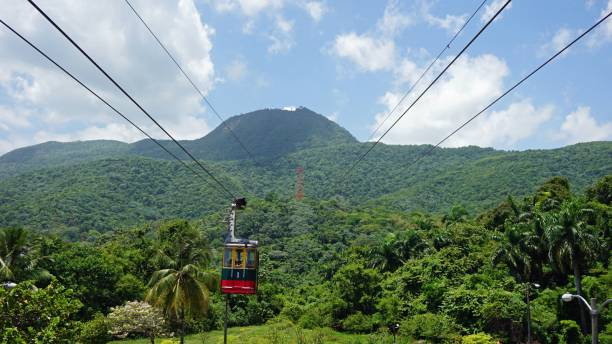
istockphoto 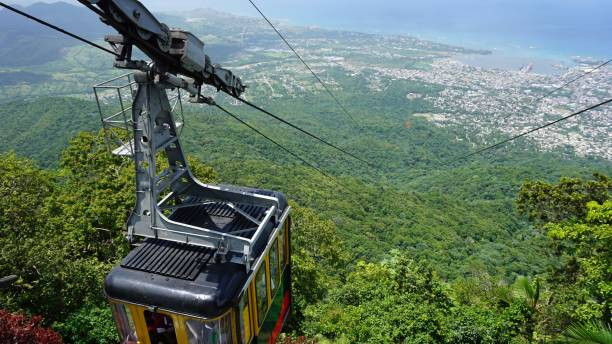
istockphoto -
Water sports receive a lot of attention in the Dominican Republic, and for good reason. That's no reason not to look for land experiences here as well, like as the ATV and buggy rides available outside of Punta Cana. Several tour companies in the region offer trips (prices range from $50 to $120 per person) that allow you to tear through beautiful forest landscape and steep hills for several hours. Keep an eye out for some of the local animals, but if you're just looking for an adrenaline rush, the buggies won't disappoint.
When riding an ATV in tough terrain, the first thing to consider is control. You must be in low gear for this. This provides lots of torque, allowing you to go around at low speeds while yet having enough guts and power to get you out of problems on terrain that might cause you to stick or wheel spin. Staying cool is essential, since the ATV has plenty of horsepower in low gear if you want to put it through its paces. Take it slowly and methodically, and you'll be able to navigate across all types of terrain without endangering yourself or your quad.
You must be mindful of the hazards in the terrain, and your personal safety should come first, followed by the care of your ATV. Fooling about on rocky terrain can result in tragic accidents, and wipeouts can be highly costly, both in terms of medical expenses and components for your quad. Assuming you already have a quad that fits you properly, it's recommended double-checking your gear for safety. Helmets are apparent, but there are a few more things to consider when riding in difficult terrain.
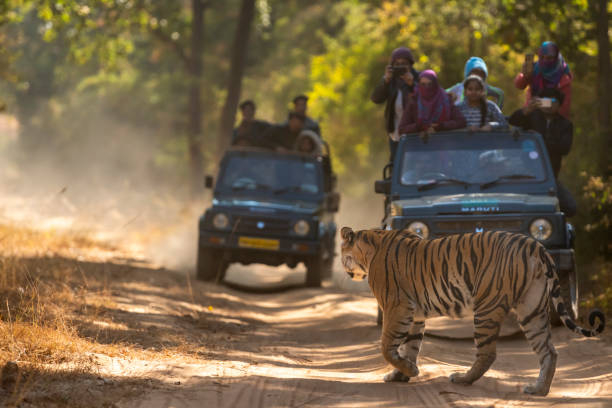
istockphoto 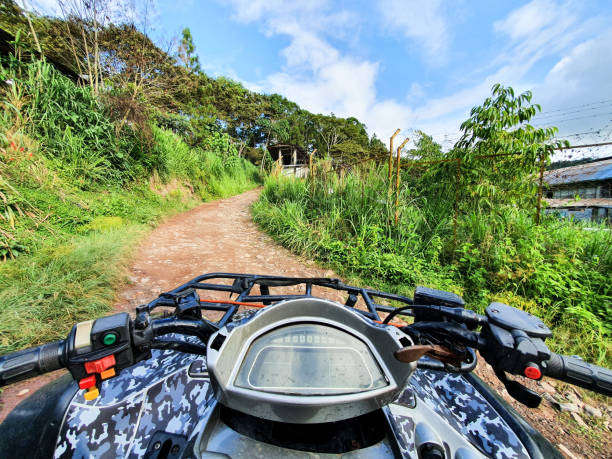
istockphoto -
The coastline of Punta Cana is dominated by a big reef that breaks the waves well away from the shoreline - this is one of the reasons why Punta Cana's beaches are so beautiful and typically devoid of strong waves. Don't worry if a private snorkeling adventure in Punta Cana isn't what you're searching for. Some fairly amazing snorkel trips have been launched onto the market in recent years, which consistently delight consumers and have exceptionally good reviews - some of them also go to the Punta Cana coral reef. They stand out for their individualized customer service, great quality, and consistent attention to detail.
Saona Island is the Dominican Republic's most well-known tourist destination! This trip is ideal for divers and snorkelers. While Saona Island is a national park, most of the coral in the region has been harmed by boats and tourists. Even so, the immaculate white beach, postcard-perfect palms, and crystal blue seas here remain magical, allowing inexperienced snorkelers to see the rich marine life below. A sandbank along the beach is a favorite site for a rum drink, which is offered by native Dominicans wading into the shallow waters.
In Punta Cana, there are several snorkeling boat cruises available. Other activities, like as parasailing, are included in some of them. The boats will transport guests to a snorkeling paradise. To access to these areas, visitors can use catamarans or speedboats. There are several local adventure groups and trips to choose from. Some trips stay closer to the coast, but there is more to see on a tour that visits local Caribbean sights. Examples are Isla Catalina and Saona Island. Beginners may learn to snorkel safely in areas with shallow water and reefs. Some trips are more sophisticated, taking tourists out to a reef to observe a wider range of aquatic creatures.
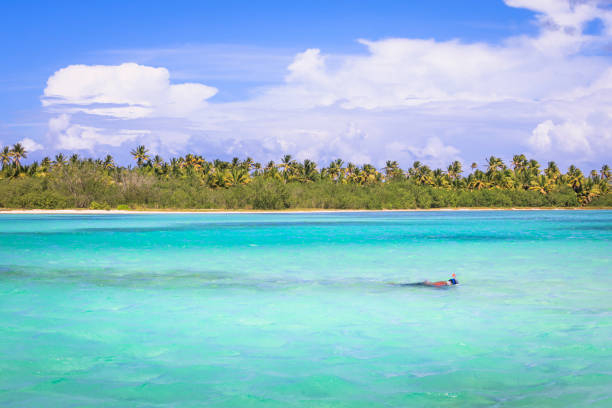
istockphoto 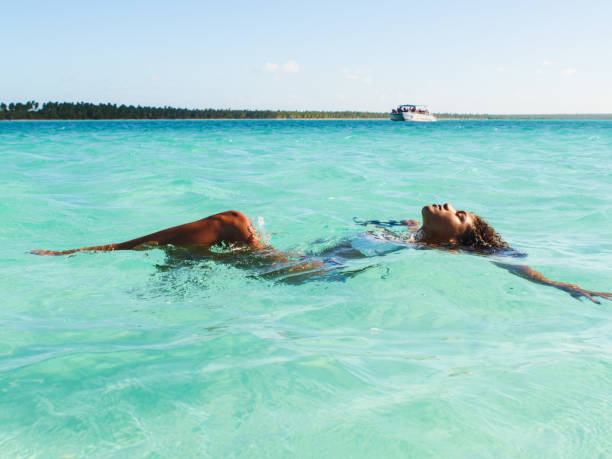
istockphoto -
Altos de Chavón is an old Mediterranean-style mansion in La Romana, Dominican Republic, constructed on a bluff above the Chavón River. It features a Cultural Center, the National Archaeological Museum, the so-called City of Artists, and a Remarkable Amphitheater. With its cobblestone streets and houses made of coral stone and terracotta, this location is a recreation of a 16th century Italian-Spanish village.
This replica was erected in 1976 in a location with a beautiful view of the Chavón River by Roberto Copa, a former Paramount Studios designer, and Charles Bludhorn, an American industrialist. Its construction began in 1976, when it was necessary to dynamite a mountain of stone in order to clear a road; popular legend has it that he did it to gift it to his daughter on her birthday, although she, who regularly visits Altos de Chavón, rejects this account.
The odd small village of Altos de Chavon, only a stone's throw from the city of La Romana on the southern shore, rising above the bends of the Chavon River, is well worth a visit. With half-timbered Italian-style residences, an ancient-looking Roman amphitheatre, the exquisite masonry of St Stanislaus Church, and a series of cobbled plazas and lanes, it's hard to imagine the entire area was designed and built in the 1970s and 1980s! The town, designed by an Italian architect, is meant to resemble a 16th-century European community. Today, it is jam-packed with superb arts and crafts booths, as well as a number of galleries.
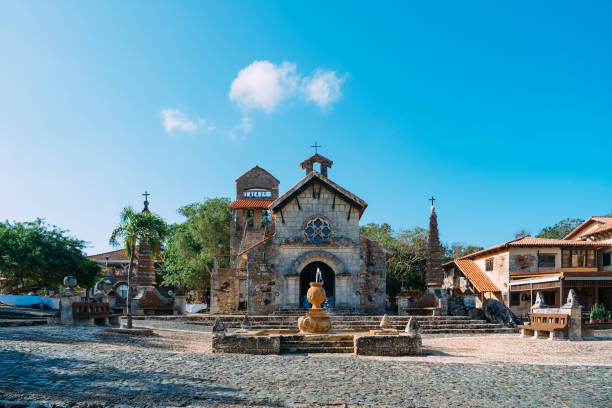
istockphoto 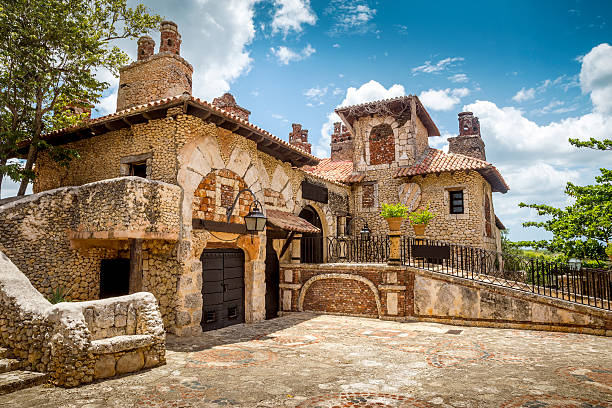
istockphoto -
Northeast of the Dominican Republic, just beneath the Samaná Peninsula, lies a rocky karst terrain that appears to have been plucked from the Mediterranean. Against a backdrop of heavily wooded hills, thirty-meter-high rock formations rise out of a large, emerald-colored bay. Turkey vultures circle over these massive mounds, while herons and pelicans sit on the green flora that covers them.
Los Haitises, which translates as "highlands" in Tano, has been preserved since 1976 and is home to rainforest, mangroves of various sorts, over 200 species of birds (it's an important bird-nesting site and sanctuary), many caverns, and some of the most Tano petroglyphs and pictographs in the country. Manatees and dolphins frequently frequent the park's waterways. Furthermore, Los Haitises National Park's life-sustaining role is as significant as its biodiversity: it is the primary water supply for the country's eastern portion. According to the Ministry of Environment, 1.12 million visitors visited the country's protected areas in 2016, with Los Haitises being one of the most popular sites.
The two most popular cave visits on a Los Haitises boat adventure have different qualities. The Tano were known to utilize caverns for ceremonies and to shelter themselves from hurricanes and other impending dangers; the chambers display thousands of year-old pictographs and petroglyphs. Footbridges and clean trails allow easy access to each cave.
Moto Marina in Samaná provides half-day catamaran or speedboat tours along the sheltered bay of the park, allowing visitors to investigate the rock formations, explore the area's mangrove waterways, and see the two Tano caves. Lunch and a swim on Cayo Levantado island are additional options; departures leave from their own dock along Samaná's Bay. Tour Samana with Terry provides comparable tours, with pick-ups available from anywhere on the Samaná Peninsula for a charge. Flora Rides provides small-sized speedboat tours from Las Terrenas to go closer to the mangroves and rock formations.
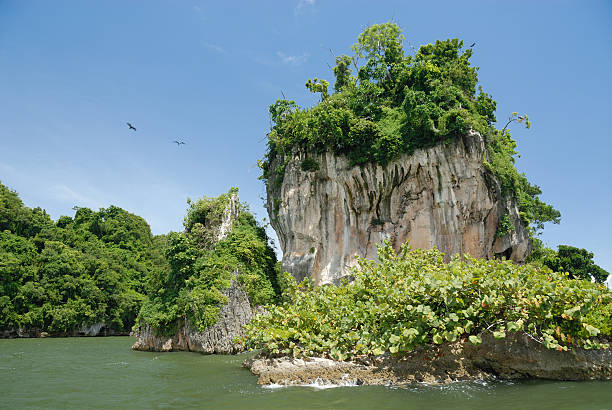
istockphoto 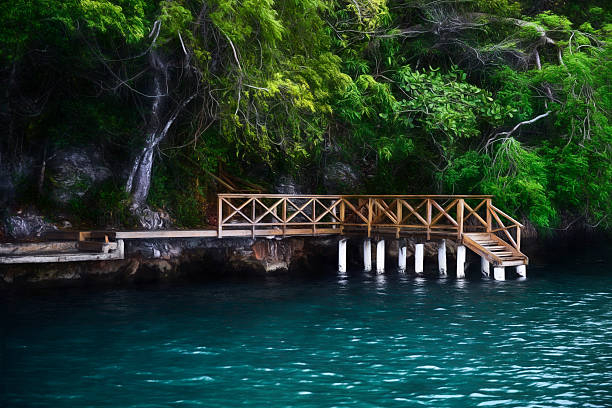
istockphoto -
Because of its shallow, warm, blue water, white sand beach, and natural surroundings, this beautiful beach on the Samaná Peninsula is regarded one of the greatest beaches in the world. Playa Rincon, a bit of a drive from big tourist destinations, has all of the world-class beach bang for your budget with substantially fewer fellow guests.
Rincon Ruby will be on your right as soon as you get at the beach. This restaurant serves fresh local-caught fish including chillo, mero, and loro, as well as delicious pasta. They also make a mean Pina Colada, albeit you're unlikely to get caught in the rain. Brassa del Mar, a stone's throw farther down the beach, is an excellent place to try grilled or fried mero, chillo, hummingbird, and swordfish. Dishes begin at RD $500 (about USD $8.50). Don't miss the lovely tiny home transformed into a bar next to Brassa del Mar, where you can have a pina colada served inside a fresh pineapple for RD $300 (approximately USD $5.15).
Playa Rincon is only a half-hour drive from Las Galeras, a fishing community on the Samaná peninsula's northeastern point, nestled between two beautiful and protected green promontories. The roads are calm, there are just a few places to dine or get a massage, and you were more likely to encounter a humpback whale than a visitor until lately. The scenery is the same now, but the setting is completely different. The natural vistas of jungle-clad mountain capes and lush cays - little irregular islands created on top of coral reefs - still remain, but they are now surrounded by diving schools, French-Caribbean fusion restaurants, and bohemian bungalows.
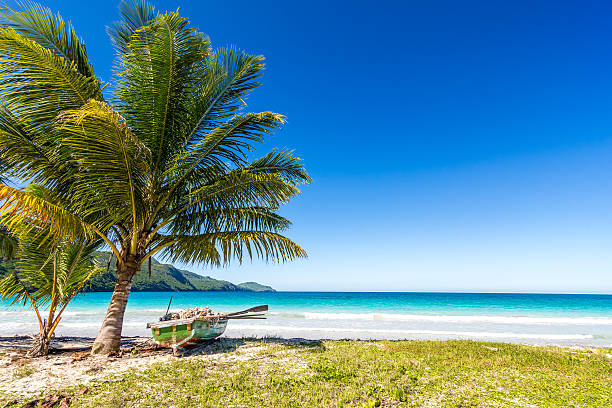
istockphoto 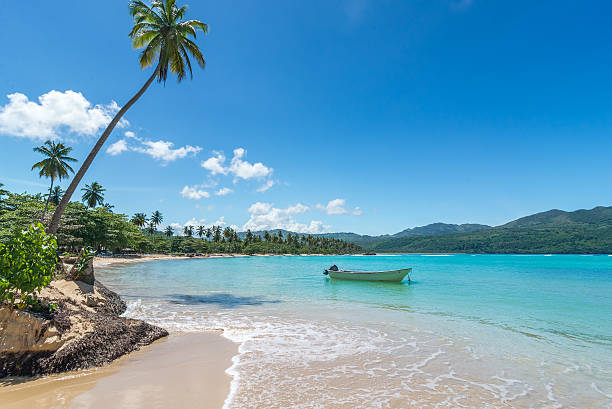
istockphoto












